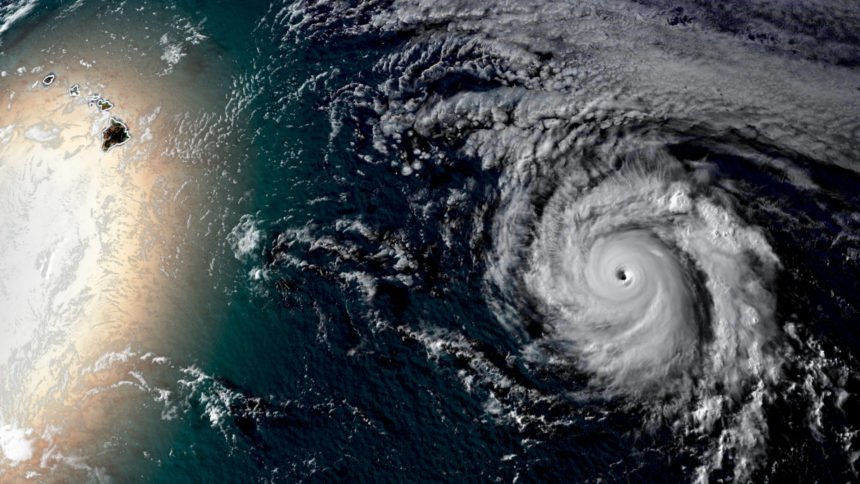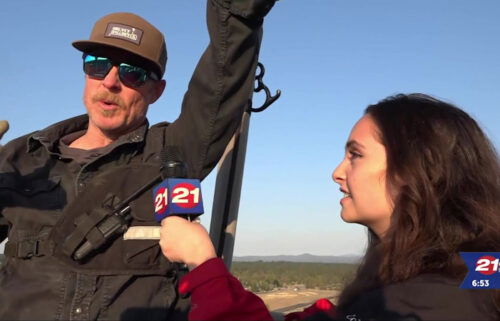Hurricane Douglas may become just third in modern history to make landfall in Hawaii

By Allison Chinchar, Gene Norman and Rob Shackelford, CNN meteorologists
(CNN) -- Douglas could become only the third hurricane in modern history to make landfall in Hawaii.
There have been a handful of tropical storm landfalls on the islands and several hurricanes have come close, but an actual eye crossing the coast is quite rare.
The two occasions since 1900 when a hurricane has made landfall were Hurricane Iniki, in 1992, and Hurricane Dot, in 1959. Iniki was a strong Category 4 storm at landfall and Hurricane Dot a Category 1.
"It is fairly common for hurricanes to track towards Hawaii, but they usually dissipate or at least weaken considerably before impacting the islands," said Phil Klotzbach, a research scientist at Colorado State University.
"For example, both Lane and Olivia impacted Hawaii in 2018. Also, in 2016, both Lester and Madeline threatened Hawaii."
While other storms have come close to Hawaii, and brought heavy rain and strong winds, they do not count on the list because they did not make technical landfall. The National Hurricane Center defines landfall as the center of circulation of a tropical cyclone intersecting a coastline.
"Because the strongest winds in a tropical cyclone are not located precisely at the center, it is possible for a cyclone's strongest winds to be experienced over land even if landfall does not occur," the NHC website clarifies. "Similarly, it is possible for a tropical cyclone to make landfall and have its strongest winds remain over the water."
Sunday, Douglas was a Category 1 storm situated just to the north of Hawaii's Big Island, and east of Maui. It was headed west-northwest toward the islands of Oahu and Kauai, where landfall is possible in one or both locations, with maximum sustained winds of 85 mph.
Hurricane warnings are in effect for Maui, Oahu and Kauai County, and tropical storm warnings are in effect for Hawaii County.
The main threats are storm surge, dangerous surf, gusty winds and heavy rainfall.
"With the storm center moving along the north side of the islands, north- and east-facing shores will feel the brunt of the wind and high surf at first," said CNN Meteorologist Chad Myers. "As the storm continues to the west today, the winds and high surf will turn to affect west- and south-facing shores as well."
The northern islands will also see the majority of the rainfall. Widespread amounts are likely to be 2-4 inches on the Big Island, whereas rainfall totals will likely exceed 5-8 inches from Maui County to Kauai County. Some isolated locations with elevated terrain could pick up as much as 15 inches of rain before the system moves out Monday.
Slow start to the eastern Pacific hurricane season
In a season that has seen early storm formation in the Atlantic, the eastern Pacific has been slower for storm development than in previous years.
"During the period of reliable records, this is the fourth-latest date in which the first hurricane of the season has formed," according to the National Hurricane Center.
Get the latest on the tropical systems around the world from CNN's meteorologists
A slow Pacific hurricane season, especially when paired with an active Atlantic hurricane season, is a sign of a La Niña event, which forecasters have predicted could occur this year.
Under La Niña, global convection wind currents yield sinking air over the eastern Pacific, and rising air over the western Atlantic.
Sinking air patterns increase wind shear, a sudden shift in wind direction, speed or both, which can rip apart hurricanes before they have a chance to grow. Rising air creates a favorable environment for tropical storm development, which is why all eyes are on the Atlantic this season.



